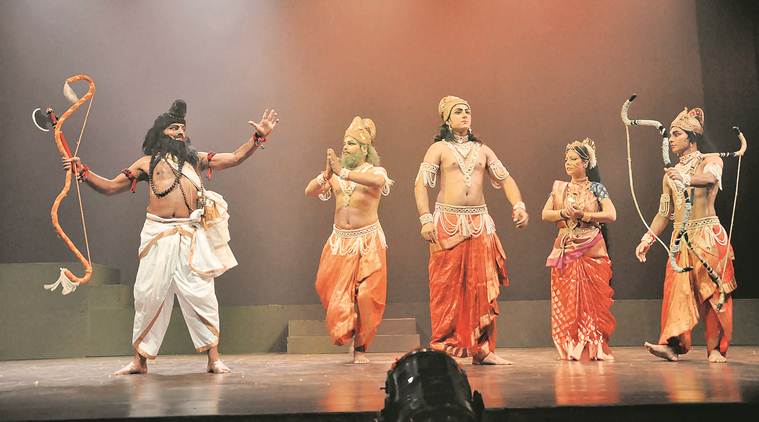Warrior Takes a Bow
Dancer and choreographer Shashidharan Nair stages the lesser-known legend of Parasurama
 A scene from Parasurama
A scene from Parasurama
According to Hindu myth, as the warrior tribe of Kshatriyas abused their power, Vishnu incarnated as Parasurama to restore the cosmic equilibrium. The legend of Parasurama is at the core of choreographer Shashidharan Nair’s eponymous dance-drama. Mythologically, the time of Parasurama precedes that of Ram and Krishna by centuries. However, Parasurama does make episodic appearances in both the Ramayana and the Mahabharata — as a warrior Brahmin, his chagrin towards the Kshatriyas intact.
“The character of Parasurama drew me because very little is known about him. He usually appears as a secondary character in most mythological stories even though he is the one of the saptarishis or seven immortals. With this production, I have explored his various facets in greater depth,” says Nair. The production has been set to a score by Madho Prasad and his father, Jwala Prasad, with rhythms by Nair and Gagan Singh.
The story of Parasurama, which was staged in Delhi recently, is an episodic retelling of the conflict between Brahmins and Kshatriyas. Narrated by an aged Parasurama seated atop the Mahendragiri Parvat, Nair’s latest production uses sutradhars to forge a link between them. “It was not possible to tell the entire tale in one go. This is where the sutradhars come into the picture, to string the episodes together. Further, the audience’s attention span has shrunk considerably. So, we created a shorter, crisper piece highlighting the key events of his life,” says Nair.
Each episode in the narrative deals with a different aspect of Parasurama’s life — from him slaying his mother at his father’s bidding, to his meeting with Lord Rama at Sita’s swayamvara. In the Mahabharata, the priest-warrior turns teacher, albeit a volatile one. He trains Karna and then curses him because the unclaimed scion of the Kuru clan does not disclose his Kshatriya identity and even battles with Bhishma. The production is a mix of Chhau, Kalaripayattu and Kathakali.
Nair started his artistic journey at the age of eight in his village in Edakkalathur in Kerala’s Thrissur. “A family of Nambudiris along with my grandfather called for a teacher from Kalamandalam to the village to teach us Kathakali. That was my first brush with the dance form. Two years later, I got a scholarship from the Raja of Palakkad, a promoter of Kathakali, to come and learn in his palace. I stayed there for five years before coming to Delhi,” says Nair, whose devotion to dance spans four decades.
He made his choreographic debut in 1989 with Sangharsh for Sahitya Kala Parishad’s Yuva Mahotsav, after having spent eight years at the Shriram Bharatiya Kala Kendra, first as a dancer and then as trainer. His acclaimed works include Tripurantak (1990), Chakravyuh (1993), Parikrama (1994), Krishna Katha (1996), and Dance of Shiva (2003). For the last two years, Nair has been a part of the Indian Revival Group, one of the supporters this production. What is key to the production, he says, is that “today, we need a Parasurama to keep those in positions of power in check, and wipes out the evil.”
Photos


- 01
- 02
- 03
- 04
- 05
























